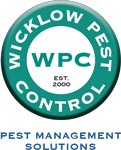Fleas Pest Control
Fleas Pest Control
Fleas
Fleas are very similar to moths, especially the lifecycle as they start from an egg, then progress to larva (caterpillar), then to a pupa (cocoon), and finally into an adult flea. These insects are very small in appearance, a newly hatched flea will be black, aggressive, and quite hungry. When they have their first feed, they will become larger, and the colour of their body may change.
Over the last three decades, we have received regular calls from people complaining that flea treatments have been ineffective, regarding DIY treatments and not identifying the flea type. This is because they can still see small black fleas and bites after completing the treatment. A couple of reasons for this is because pupas are resistant to chemicals, poor housekeeping and managing of pets will result in reinfestation. Therefore, fleas continue to hatch as the insecticides cannot infiltrate the flea pupal case. Ten fleas can reproduce to 250,000 in only 30 days.

Fleas Control
Fleas Are Easily Transported
Fleas are easily transported by cats and dogs while they are outside in parks and fields which will then be brought back to your home via your pet. Their white eggs will fall off your pet and land onto your carpet or favourite rug at the fireplace. Small blind larvae emerge from the eggs. These larvae move away from the light, delving down into the carpet, cracks in floorboards, or into the soil. They feed on protein, such as flea droppings of partly digested blood. They moult three times before forming a pupa. The larva changes into the adult in the pupa.
During the summer months, we see an increase in calls as the weather changes. A flea may hatch from the pupa approximately 7-14 days after it is formed. Having said this, the fleas may also not do anything for up to 18 months. Hatching of the flea from the pupa is triggered by nearby movement, predominantly during warm, moist weather conditions. After feeding on the host, the engorged female flea is ready to mate and lay eggs – about 24 hours after hatching. She can lay up to 500 eggs (27 per day) over a lifetime which may span several weeks

Fleas Control
Fleas Are a Nuisance to Their Hosts
Fleas are a nuisance to their hosts, causing an itching sensation which in turn frequently results in the host attempting to remove the pest by biting, pecking, scratching, etc. Fleas are not simply a source of annoyance, however. Some people and animals suffer allergic reactions to flea saliva, resulting in rashes and other skin irritations. Flea bites generally result in the formation of a slightly raised, swollen itching spot with a single puncture point at the centre (not unlike a mosquito bite)
Fleas are tiny reddish brown wingless insects, with backwardly directed spines and legs designed for jumping. Adult fleas are parasitic on warm-blooded animals and at their larval stages, they live in the nest of the host and feed on skin, feathers, and the blood-rich faeces of the adult flea. When fully grown, flea larvae spin well camouflaged silken cocoons, where they wait as fully developed adults, until it detects the vibrations caused by a potential host. A flea’s complete lifecycle only takes around a month in the summer.


